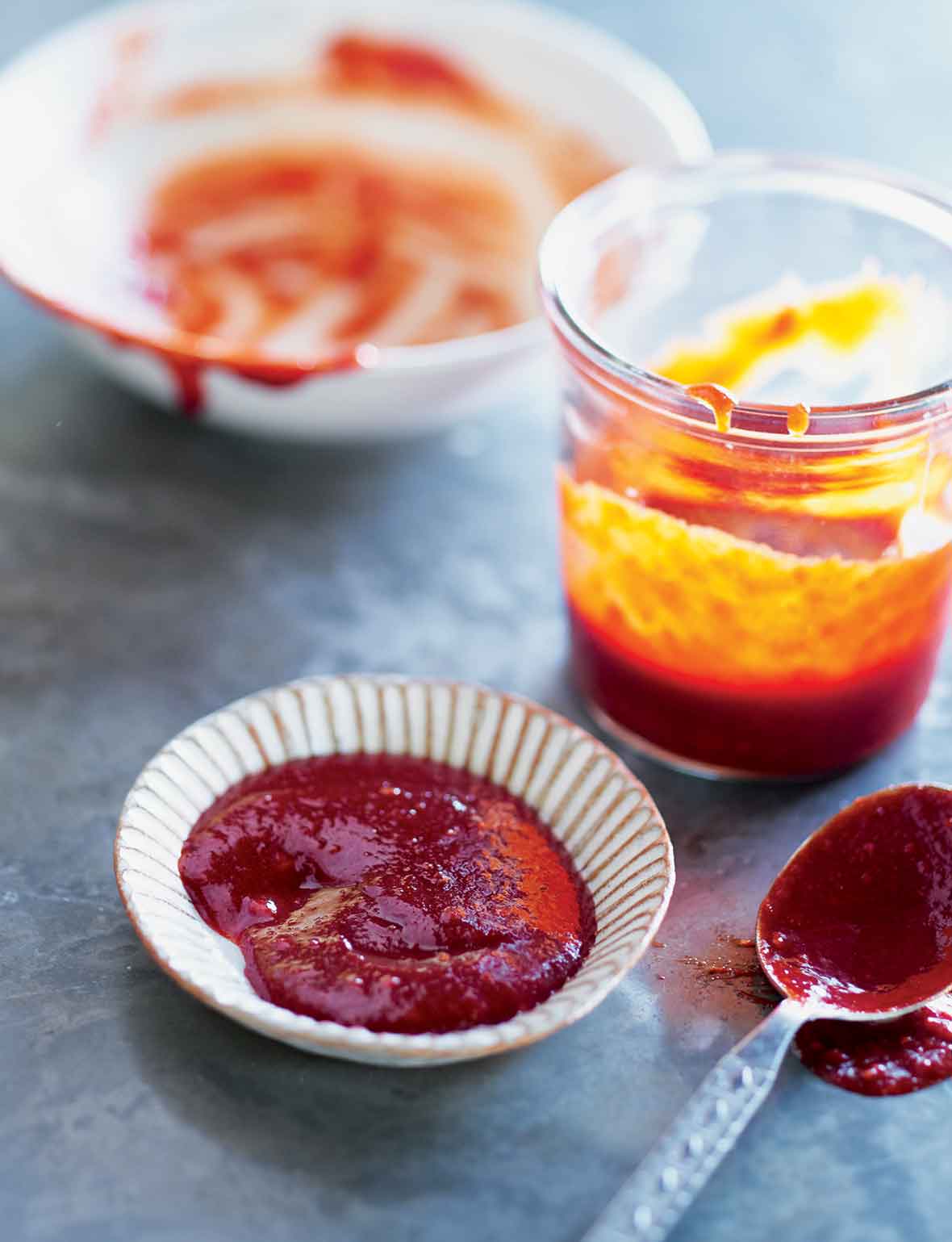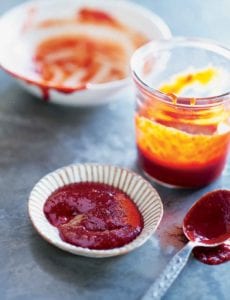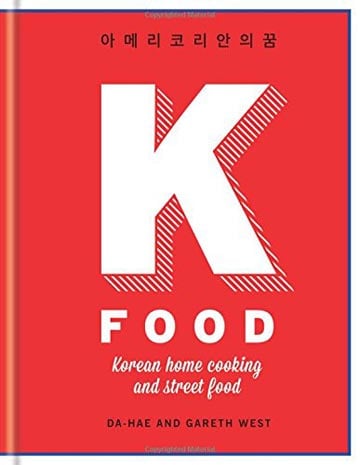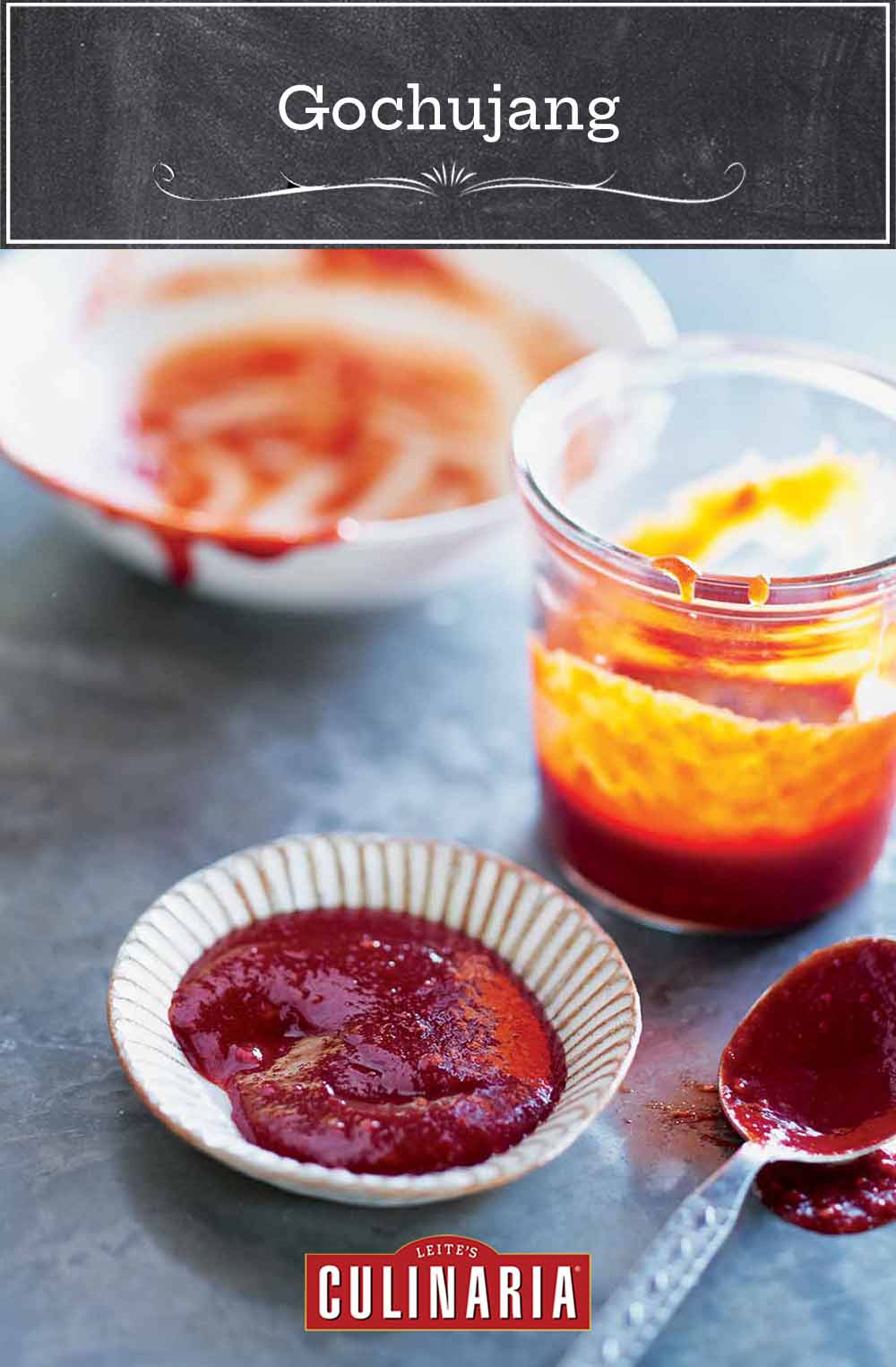
Got gochujang? It’s a salty, savory, and rather unforgettably pungent red chile paste from Korea that’s far more complicated than Sriracha and lends its rather unforgettable accent to anything. Pronounced “gah chu jang,” it has a sweet heat that varies in intensity from brand to brand and recipe to recipe.
This rendition from cookbook author Da-Hae West is a quick riff on the stuff found in rectangular tubs with a flip-top lid at Korean markets using simple ingredients you can find in any ordinary supermarket. Truth be told, some of our testers find it to be a touch more fiery than supermarket brands, but you can easily modify it for more timid palates by using a touch less cayenne or a little more sugar.
Keep in mind, gochujang isn’t the sorta thing you dab on something at the table. It’s instead incorporated into all manner of recipes to lend a magnificent and unparalleled depth.–Renee Schettler Rossi
How To Use Gochujang
How to use gochujang is really up to you and your individual palate. Traditionally, it brings a depth and complexity that simply can’t be equaled by other hot sauces to almost everything Korean, including bulgogi, bibimbap, kimchi, Korean fried chicken, Korean beef tacos smothered with kimchi, countless pork preparations, stir fry dishes, and noodle creations of all sorts. Call us rebels, but we also quite like to incorporate it into all manner of untraditional things, including…
Incorporated into ground beef for burgers
Mixed into marinades (be careful as the sugar in the gochujang can cause meat to scorch if cooked over crazy high heat)
Stirred into braises and stews (including slow-cooker recipes)
Tossed with chunks of winter squash prior to roasting
Added to deviled eggs
Stirred into soups
Mixed with mayo and slathered on sandwiches
Got a can’t-live-without use for gochujang? Let us know in a comment below!

Cheater’s Gochujang
Ingredients
- 1/2 cup white miso paste
- 1/4 cup light corn syrup (or substitute agave syrup or honey)
- 1/4 cup cayenne pepper, or less to taste
- 2 tablespoons mirin
- 1 tablespoon superfine sugar (or just blitz some granulated sugar in a blender or food processor until finely ground but not powdery), or more to taste
- 1 garlic clove, minced
Instructions
- Stir together the miso, corn syrup, cayenne pepper, mirin, sugar, and garlic until well combined.
- Decant the gochujang mixture into a clean jar or resealable container, cover, and stash it in the refrigerator for up to several weeks. The gochujang is fine to use immediately but if you wait several days the flavor will be more melded and nuanced.

Nutrition
Nutrition information is automatically calculated, so should only be used as an approximation.
Recipe Testers’ Reviews
Gochujang is an incredibly useful Korean condiment that combines fermented soybean funkiness with chile heat and unabashed sweetness. This simple recipe using supermarket ingredients takes only a couple minutes to put together and hits the same notes. I did a side-by-side tasting with a commercial gochujang to compare the flavors. This recipe makes a Korean chile paste that is considerably hotter, less salty, and less sweet than store-bought renditions. Whether that’s a good thing or not depends on what you are going for, but you can always add more miso and more sweetener, can’t you? Too hot? Reduce the chile or, better yet, use a blend of hot and mild ground chiles.
This version came out quite a bit thicker than my jar of commercial gochujang, which is also not really a problem. You can always thin it with water, more mirin, or, better yet, bourbon.
Gochujang is one of my new favorite things to add to sauces and marinades these days. I LOVED making this recipe because it demystifies an otherwise mysterious—and delicious—ingredient that is sometimes hard to come by, so it’s great to have the knowledge in one’s back pocket to whip it up so easily. Although I can find it at almost any of the stores I frequent, it isn’t that way for lots of folks, and I still don’t have a huge choice of brands.
One change I needed to make was actually due to another ingredient I couldn’t find to save my life—corn syrup! For whatever reason, it was not in ready supply. So, I improvised and used dark agave nectar, which I actually think was a great swap! (I’m also more likely to have agave nectar on hand at home anyhow, making this recipe even more realistic for me to make). I used some of the gochujang the day after making it, and though it added a great kick to my dish, I felt like the depth of flavor wasn’t quite there yet. I’d love to know how long is best to wait until the flavors meld. Other than that, it was fantastic, and I’m thrilled to have this simple sauce in my arsenal.












I really liked this recipe more than the brand I was buying. I also loved that I could make a hot blend with ground got Korean peppers and a mild blend with 3 tablespoons paprika and 1 tablespoon hot ground peppers. I used a dark local honey and it really made the flavor pop.
Wonderful, Leah. Have you tried it on these kimchi tacos?
I have Korean chili powder that I use for making kimchi…can I sub that for the cayenne?
Definitely! The heat will be a little different—likely more intense—but I think you’ll like it, Fran.
Just one question: If I don’t have mirin, is there anything I can substitute? Sherry + more sweetener, maybe? TIA!
Absolutely, Suzanne. Sherry or sake or white wine with a touch of sugar would work perfectly fine. I’ve seen a lot of variance in the suggested ratios of wine to sugar for this substitution. This recipe calls for such a small amount of mirin it’s not going to be hugely noticeable. I would use 2 tablespoons liquid and up to 1/2 teaspoon sugar. Would love to know what you think of the gochujang!